Amphipolis Greek Tomb Discovery in Pictures: Could Alexander the Great Be Buried Here?
Greek prime minister Antonis Samaras has visited the excavation site of Ancient Amphipolis in the northern Greek region of Serres, where Greek archaeologists have spent the last two years unearthing a massive burial mound complex at Kasta Hill.
After two years of excavations, the Greek archaeologists have come to the conclusion that the tomb houses an important figure from 320-300 BC, and yesterday Samaras announced this to the world, according to Greek newspaper Proto Thema.

Lead archaeologist Katerina Peristeri took Samaras and his wife Georgia, together with the Greek culture minister Constantinos Tassoulas on a guided tour of the excavation site.
Amphipolis is a Greek city that was founded by Athenians in eastern Macedonia on the Strymon River in 438-437 BC.
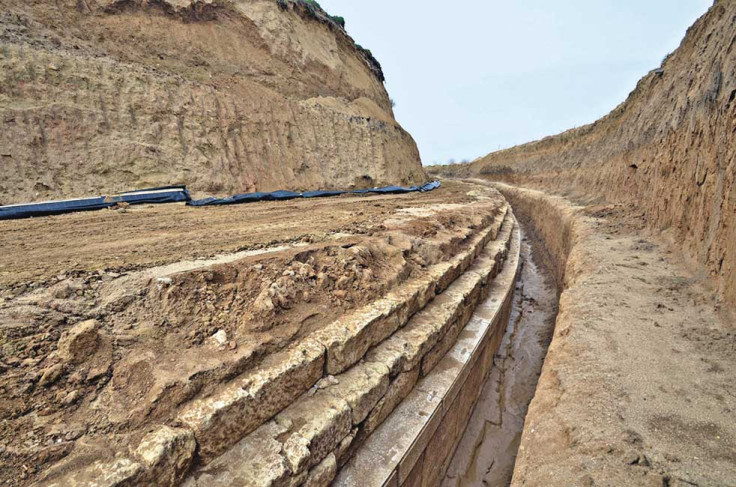
The burial mound measures 497m across, with a wall that is 3m high. Although it is almost a complete circle carved in marble, it is built in levels similar to the way an Egyptian pyramid is built.
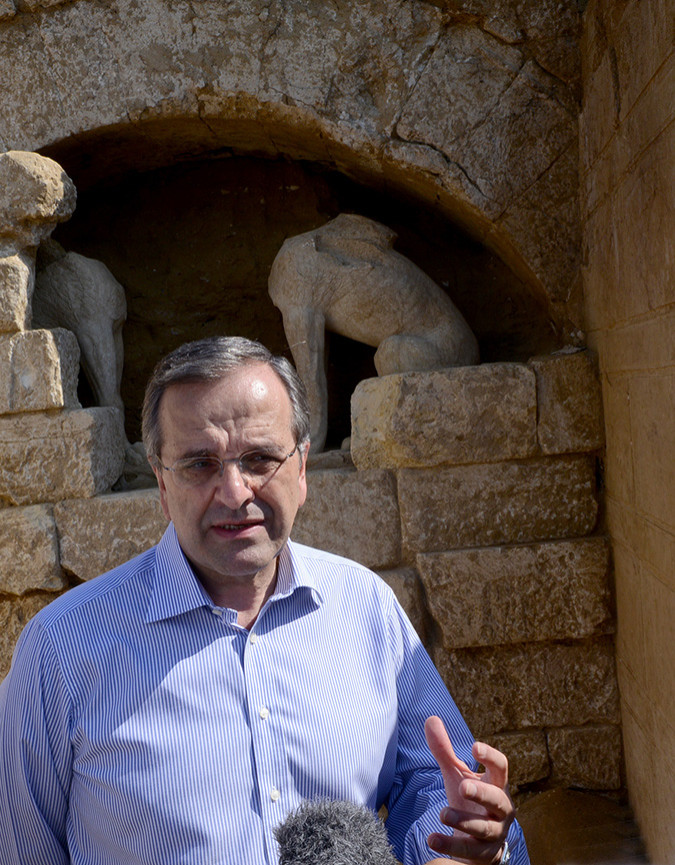
A wide path leads to the tomb where the entrance is guarded by two statues of sphinxes, also carved from marble, which would have been imported from the nearby island of Thassos.
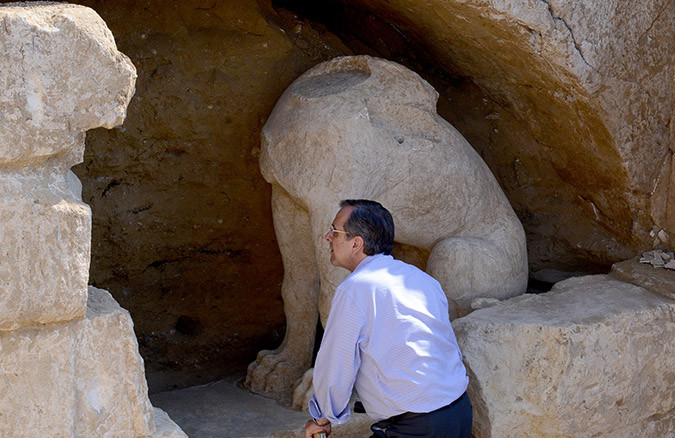


"We're in the middle of the excavation. Every 20cm of dirt brings new data. We know about the context and general information. More information will be provided once the next phase of excavation will be done in a few days, " acclaimed architect Michael Lefantzis told the Athens-Macedonian News Agency.

The famous Lion of Amphipolis, one of the best preserved monuments from 4<sup>th century BC, was found in 1912 by the Greek army in the river bed of the Strymónas.
Lefantzis believes that it once stood at the highest and most central point of the Kasta Hill mound. It now stands next to the old bridge over Strymónas river, on the street Amphipolis-Serraiki Akti.
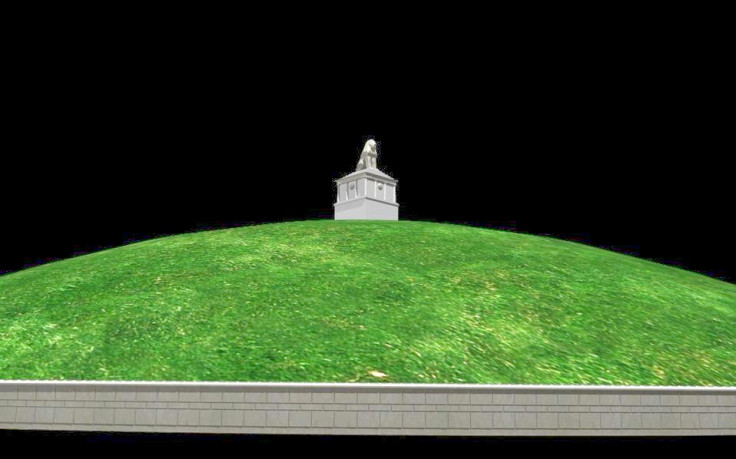
"The land of Macedonia continues to move and surprise us, revealing from deep within its unique treasures, which combine to form the unique mosaic of Greek history of which all Greeks are very proud," Samaras said after viewing the site, according to Proto Thema.
"I believe all these findings have allowed archaeologist Katerina Peristeri to be optimistic that this is a unique burial monument, which – as she said – dates between 325 BC and 300 BC.
"Regarding the key question, the excavation will reveal the identity of the deceased. The excavation will continue at a pace dictated by the finding as well as the scientific ethics."
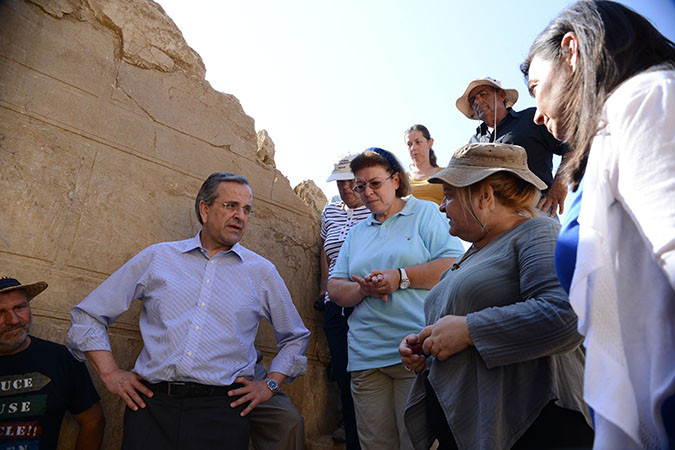
The burial complex site is ten times larger than the tomb of Alexander's father, Philip II of Macedon, and archaeologists think that it was probably built by ancient architect, Dinocrates, who was both a technical adviser and friend of Alexander the Great.
As for who lies in the tomb, there has been much debate. Some of the Greek media have theorised that Alexander the Great might lie in the Kasta Hill mound, but that is unlikely as the tomb was built after his death, and his tomb is believed to be somewhere in Egypt.
At the moment, the leading theory is that someone close to Alexander the Great is buried in Kasta Hill, possibly the general Laomedon.
Others believe the lion statue was erected on the hill by Agnon and dedicated to the 10,000 people killed in the battle of Draviskos, another ancient city in Serres.
© Copyright IBTimes 2025. All rights reserved.




















